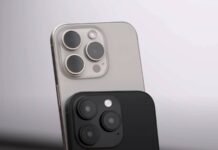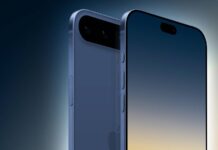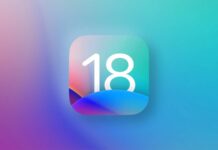Apple Watch va fi disponibil pentru precomanda in 9 tari de pe glob incepand de vineri, lansarea oficiala fiind programata pentru data de 24 aprilie in aceleasi tari, iar astazi vedem primele review-uri facute de catre diverse publicatii americane pentru noul produs al companiei din Cupertino. Majoritatea celor care au testat Apple Watch il prezinta ca fiind cel mai bun smartwatch lansat vreodata, insa in aceeasi masura sustin ca el nu este esential pentru majoritatea utilizatorilor si nu se va plia pe nevoile tuturor dintre noi, astfel ca recomandarea de achizitie este facuta cu rezerva.
Toti cei care au testat Apple Watch lauda diversele functii implementate de catre compania americana pentru el si considera ca spre acest tip de produse ar trebui sa se indrepte toti cei care au facut un trecut smartwatch-uri ce nu au avut succes, insa din pacate nu toata lumea se va acomoda cu un asemenea gadget.
Hardware
Like most things we adorn ourselves with, you have to love the way this looks on you. Apple’s design doesn’t compete with Rolex, Omega, or Breitling for sheer style, but the more I wore the inconspicuous thing, the more I liked it on my wrist. … And all the speedy software and motion tracking is controlled by the company’s new S1 processor, which packs in multiple components on a single chip. It’s an impressive package. After using it, I had no question that the Apple Watch is the most advanced piece of wearable technology you can buy today.
As an object, it makes sense that the Watch is not nearly as cold and minimal as Apple’s recent phones and tablets and laptops. It has to be warmer, cozier. It has to invite you to touch it and take it with you all the time. Take the bands off and it’s a little miracle of technology and engineering and manufacturing, a dense package containing more sensors and processing power than anyone could have even dreamed a few decades ago. It’s a supercomputer on your wrist, but it’s also a bulbous, friendly little thing, far more round than I expected, recalling nothing quite so much as the first-generation iPhone. It is unbelievably high tech and a little bit silly, a masterpiece of engineering with a Mickey Mouse face. It is quintessentially Apple.
The Apple Watch is light-years better than any of the feeble, clunky efforts that have come before it. The screen is nicer, the software is refined and bug-free, the body is real jewelry. First-time technologies await at every turn: Magnetic bands, push-to-release straps, wrist-to-wrist drawings or Morse codes, force pressing, credit-card payments from the wrist. And the symbiosis with the iPhone is graceful, out of your way, and intelligent.
With that said, I’ve worn my fair share of smartwatches and none are as good-looking as Apple Watch. My “next-best” design award goes to the round-faced Moto 360, but its display isn’t as rich-looking.
The edges of the Apple Watch are gently rounded, and the Retina display pours into a barely-there edge like a tiny black infinity pool. In terms of size, the 42-millimeter Apple Watch feels just big enough. I like a bigger watch, and the the 38-millimeter model didn’t feel like enough Apple Watch for me. It’s also rather thick; multiple people have remarked upon this when they’ve seen it.
Fete pentru Ceas
Apple allows you customize the face of the watch, not only with tapping Mickey and other unique designs, but with little widgets it’s calling “Complications” (in a nod to classic horological terms). These items that dot the edges of the display can tell the temperature outside, signal your next calendar appointment, show the phases of the moon, and so on. In spite of the name, these Complications are one of the most useful parts of the watch, offering the kind of information that really does elevate the device beyond a simple timepiece.
The main watch face really is a complete self-contained experience: if the Apple Watch had no other functionality except for what you can do from the watch face, it would still be competitive. Customizing the Watch Face is the first time you’ll use Force Touch: you push a little bit harder on the screen, and you can swipe between Apple’s selection of watch face templates, each of which can be customized and saved as individual variations. Most of the templates are minor riffs on the same basic analog watch, but others are very strange indeed, like the animated butterfly and jellyfish. There’s no particularly great digital face, and there’s no ability to load up your own watch faces or buy new ones from the store, which is a clearly missed opportunity.
In Astronomy, you see the earth from space, correctly illuminated as it appears at this moment. If you tap the tiny Moon icon in the corner, you fly through space, the moon looming larger as you approach, until you’re viewing it as it’s currently illuminated.
In some faces, like Chronology, Utility, Color, and Simple, you can customize the complications that appear in the four corners. (In the watch industry, a complication is actually a desirable feature. It’s information beyond time-telling, like a date display or a moon calendar.) You might decide to display the sunset time, battery level, fitness goal, day/date, or stopwatch.
After you first set up your Apple Watch and pair it with your iPhone using Bluetooth, you’ll think, “What the heck is going on, where do I swipe to see things, how do I get rid of this notification that just popped up?” And so on.
With some other smartwatches, that feeling never fully evaporates. With Apple Watch, it does.
The main face is the watch face. There are currently ten faces you can choose from, and you can customize each one to show things like date, weather, activity levels and battery life. Apple is calling these tiny info displays “complications,” a nod to mechanical watches.
Notificari
Eventually, I figured out that getting the watch to really work for you requires work. I pruned a list of VIP contacts in my mail app to make e-mail notifications more tolerable, I killed several app notifications that I found to be consistently interruptive, and I streamlined my list of applications to those that seemed truly vital to my day.
But the biggest missed opportunity is that there’s no way to customize the notification sounds and Taptics on the Watch. I couldn’t set a different alert for messages than for mail or calendar invites; they all just sort of felt the same. Without this ability, the Taptic Engine is just a small improvement over existing smartwatches. Let me create and set my own notifications, and it’s a revolution.
Getting notifications on the way to work also highlighted a key issue that the Apple Watch shares with Google’s Android Wear: you have to be really bought into a single ecosystem for everything to work well out of the box. If you’re not a believer in all of Apple’s apps and services, the Apple Watch is going to be a little frustrating until developers build more support for it. For example, it’s easy to send iMessages from the Watch, but there’s no way to use WhatsApp or Hangouts. I spend a huge part of my day in Slack; it’s somewhat useful to know people are mentioning you in a chat room because of taps on your wrist, but it would be much better if you could actually do something about it. There’s a lot of work left to be done here.
On that topic, Apple’s notification management is excellent. You have total control over which kinds of messages tap you on the wrist. You can choose “The same ones I’ve set up on my phone,” or override those settings for the Watch.
And if some call or alert starts ringing at an inopportune moment, you can shut the watch by pressing your palm against its screen, as though to say, “QUIET!” That’s handy in libraries, churches, or chess matches.
If you press down firmly on the touchscreen Watch display, it will perform certain functions. If you want to clear all notifications, for example, you can use Force Touch. You can read entire emails on the watch, but that’s often a lot of text for a small face. Out of the many (many!) notifications I’ve been getting on my wrist, I’ve liked seeing and responding to iMessages the most.
Autonomia bateriei
By the end of each day, I was hyper-aware of how low the Apple Watch battery had gotten. After one particularly heavy day of use, I hit 10 percent battery at 7pm, triggering a wave of anxiety. But most days were actually fine. Apple had a big challenge getting a tiny computer like this to last a day, and it succeeded — even if that success seemingly comes at the expense of performance.
But Apple is right about one thing: You’ll have to charge this thing every night. They’ve made that as easy as possible, especially if you have one of the bands with magnetic clasps that aren’t fussy to remove. The charger is a sweet magnetic disc that snaps automatically onto the back of the watch and charges it via induction—you don’t have to align it any particular way. And the cord is 6 feet long, so it’ll reach from your bedside table to a power outlet near the floor.
This means, however, that you won’t be wearing the watch at night. That’s a much bigger problem than anybody seems to be acknowledging. For one thing, that fact makes the Apple Watch the only fitness tracker on the market that can’t track your sleep.
Apple has promised that the battery will last 18 hours per charge with normal use. It hasn’t yet died on me during the day, or even late at night. My iPhone actually conked out before the Watch did; this happened to Bonnie, too.
One day this past week, I woke up at 5:15 am, exercised for an hour using the Watch, ran Maps during my commute, made phones calls and received notifications throughout the whole day, and by 11:00 pm the Watch was just hitting its Power Reserve point.
Concluzii
The watch is not life-changing. It is, however, excellent. Apple will sell millions of these devices, and many people will love and obsess over them. It is a wonderful component of a big ecosystem that the company has carefully built over many years. It is more seamless and simple than any of its counterparts in the marketplace. It is, without question, the best smartwatch in the world.
The Apple Watch is cool, it’s beautiful, it’s powerful, and it’s easy to use. But it’s not essential. Not yet.
There’s no question that the Apple Watch is the most capable smartwatch available today. It is one of the most ambitious products I’ve ever seen; it wants to do and change so much about how we interact with technology. But that ambition robs it of focus: it can do tiny bits of everything, instead of a few things extraordinarily well. For all of its technological marvel, the Apple Watch is still a smartwatch, and it’s not clear that anyone’s yet figured out what smartwatches are actually for.
But that’s technology as fashion; it’s not quite yet fashion itself. If you’re going to buy an Apple Watch, I’d recommend buying a Sport model; I wouldn’t spend money on how it looks until Apple completes the task of figuring out what it does.
But the true answer to that question is this: You don’t need one. Nobody needs a smartwatch. After all, it’s something else to buy, care for, charge every night. It’s another cable to pack and track. Your phone already serves most of its purposes. With the battery-life situation as it is, technology is just barely in place to make such a device usable at all.
In the end, therefore, the Apple Watch is, above all, a satisfying indulgence. It’s a luxury. You might buy it to bring you pleasure—and it will—much the way you might buy a really nice car, some really nice clothes, or a really nice entree. Or a really nice watch.
It’s swiping through pictures of family on your wrist, seeing your heart rate spike when you’re watching an exciting game, and getting a glimpse of a message when you’re rushing between classes or meetings. It’s trying really, really hard not to look at your wrist when you’re in the middle of a meeting. In our new world of too-many-devices, it somehow becomes the second thing you reach for when you roll out of bed.
Smartwatches are still unproven, but Apple has made a pretty strong case for them.
“It was only on Day 4 that I began appreciating the ways in which the elegant $650 computer on my wrist was more than just another screen. By notifying me of digital events as soon as they happened, and letting me act on them instantly, without having to fumble for my phone, the Watch become something like a natural extension of my body—a direct link, in a way that I’ve never felt before, from the digital world to my brain. […]
What’s more, unlike previous breakthrough Apple products, the Watch’s software requires a learning curve that may deter some people. There’s a good chance it will not work perfectly for most consumers right out of the box, because it is best after you fiddle with various software settings to personalize use. Indeed, to a degree unusual for a new Apple device, the Watch is not suited for tech novices. It is designed for people who are inundated with notifications coming in through their phones, and for those who care to think about, and want to try to manage, the way the digital world intrudes on their lives.”
“With the Apple Watch, smartwatches finally make sense. The measure of their success shouldn’t be how well they suck you in, but how efficiently they help you get things done. Living on your arm is part of that efficiency—as a convenient display, but also a way to measure your heart rate or pay at a cash register. This is a big idea about how we use technology, the kind of idea we expect from Apple. […]
Yet the Apple Watch isn’t quite the gatekeeper to my digital life that I wanted. Take app alerts—there’s a fine line between being in the know and having your wrist jiggle all day. It never got horrible for me, because Apple lets you assign VIP status to individual contacts and specify which apps can trigger alerts. But setting up all of this is a tedious—and unfortunately ongoing—chore.”
















